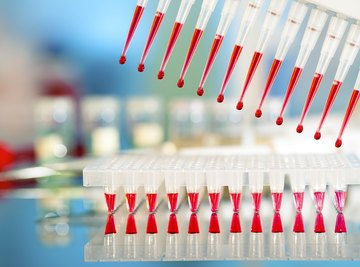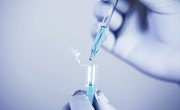
Ribosomes are unique structures that translate the DNA code via messenger RNA (mRNA) into actual proteins that cells use for processes. Ribosomes are different from other organelles because they have no membrane around them that separates them from other organelles, they consist of two subunits, and when they are producing certain proteins they can become membrane bound to the endoplasmic reticulum, but they can also be free floating while performing their function.
Most Organelles Have Membranes, Ribosomes Do Not
Other organelles in the cell, such as the mitochondria and lysosomes, are enclosed by lipid membranes that separate them from other structures in the cell. Ribosomes exist as free structures that float throughout the cytoplasm of the cell. They do not have membranes, which allows them to pick up translational RNA released from the nucleus and grab onto free amino acids in order to produce protein chains.
Ribosomes Consist of Two Units
Ribosomes have a two units. The smaller unit reads the messenger RNA and the larger unit functions to link the amino acids to form the protein chain. When a ribosome is not producing proteins, these units are separated. Most other organelles are larger than ribosomes and a cell can hold a few thousand ribosomes.
Hooking Up with the Endoplasmic Reticulum
Ribosomes can become membrane bound by the endoplasmic reticulum, an organelle that serves to package proteins in order for them to be transferred to other areas of the cell or for transport outside of the cell. The ribosomes become attached to only one side of the endoplasmic reticulum and this region is called the rough endoplasmic reticulum.
Free Floating Protein Production
Free floating ribosomes make proteins that are usually used in the cytoplasm of the cell. Free ribosomes are not different from bound ribosomes. The cell can even change the number of ribosomes needed depending on the protein production needs of the cell.
About the Author
Terri Schab is an biologist/wetland scientist who is passionate about ecosystem biogeochemical functions, environmental policy and any plant or fungi that exists. She was the lead scientist for a large wetland migration bank in the Pacific Northwest and is especially passionate about chemistry, ecosystem functions, green issues and science in general. She has also studied mathematics and has taught statistics in her career.
